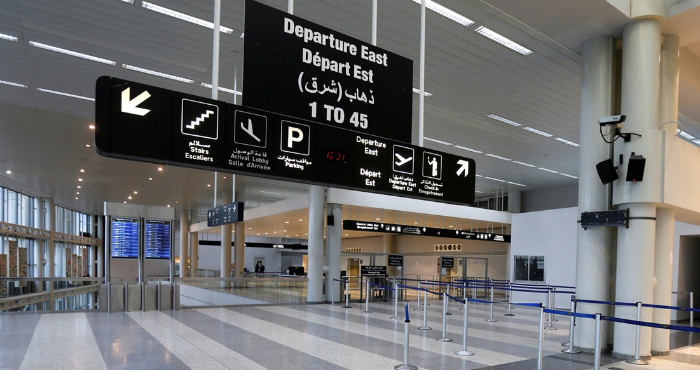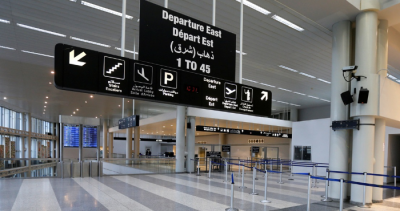Amidst the rumors surrounding Beirut International Airport, the airport has become a balloon inflated with an image that does not reflect its true condition. According to a study by the Ministry of Public Works, which identified 15 priorities for improving the airport’s operational status, significant maintenance is required amounting to approximately $20 million. This includes essential repairs related to radar, bathrooms, elevators, escalators, and removing obstacles noted by international organizations years ago under the title of maintaining public safety, as well as fencing maintenance concerning lighting and cameras.
In a message from the acting Director General of Civil Aviation, Fadi Hassan, to Minister of Public Works and Transportation Ali Hamie, an urgent list was outlined for works and equipment needed to ensure the airport's operational continuity. This message comes in response to a report by the International Civil Aviation Organization (ICAO), which detailed the deficiencies of Beirut Airport in a 12-point report. Following this report, the Cabinet requested last October that the Ministry of Public Works and Transportation and the Council for Development and Reconstruction prepare necessary reports and studies for airport maintenance, although no financial allocations for the maintenance were set at that time. In turn, Hamie requested the Council for Development and Reconstruction to raise a report on the estimated cost of these works.
According to "Al-Akhbar," the consultancy Dar Al-Handasah conducted a preliminary cost study for the points mentioned in the report, indicating that the cost required to ensure the airport's operational continuity could reach $20 million.
On the priority list for Beirut International Airport, radar maintenance, or rather the purchase of a new radar system, is crucial as per a previous report from the ICAO. The cost of the required equipment is $7 million, which Lebanon was supposed to pay from its Special Drawing Rights (SDR) based on Cabinet Decision No. 10 issued in 2023. However, it remains unclear what the source of funds allocated for purchasing this radar is now that the SDR funds have been exhausted. If the funds were transferred to the account of the Directorate General of Civil Aviation at that time, then only an international tender through the ICAO would be left to proceed.
The list is extensive and includes essential points for improving airport operations. Although it indicates considerable wear and tear on the terminal due to time factors, it affirms the presence of a vital facility that cannot be replaced. The prioritized works list includes conducting an aerial survey of the obstacles surrounding the airport, which falls under the responsibility of the General Directorate of Civil Aviation and involves the new buildings established around the airport, especially since the natural terrain surrounding the airport is higher, necessitating detailed studies, given that international aviation regulations require an obstacle survey every five years.
Additionally, the list includes installing electrical power management and control devices, purchasing generators with their synchronization equipment, and updating pilot assistance devices for landing, takeoff, and taxiing, especially since malfunctioning of these devices can paralyze the airport operations, according to a previous report from the Directorate of Civil Aviation.
The ministry also requested maintenance for runway and aircraft parking lighting, the replacement and updating of passenger baggage conveyor belts, maintenance of escalators and bathrooms, a study for the roads surrounding the airport, maintenance of aircraft parking areas on the airport grounds, signaling and marking systems on runways and passenger entrances, perimeter fencing, elevators, and uninterrupted power generation and support systems for the airport facilities.
According to maintenance officials at the airport, the buildings and equipment are nearly 30 years old, and the improvements made have only been cosmetic, never classified as actual improvements over the past three decades. For instance, the main electricity station at the airport contains four generators, each with a maximum output capacity of 8 megawatts, yet maintenance workers do not draw more than 3 megawatts from each generator for fear of a major breakdown. In recent years, these generators have been heavily stressed due to frequent power outages and the airport management's reliance on them to operate its facilities. Sources from "Al-Akhbar" mention that were it not for the constant maintenance of the generators and not overloading them, they would have collapsed long ago, as they have exceeded their operational lifespan by years.
Sources reveal that maintenance workers rely on their expertise to recycle and produce some parts using lathes because supplying companies have stopped manufacturing them, as they are no longer used worldwide. Regarding the problem of backup power, sources pointed out that the airport needs three additional generators with a capacity of 5 megawatts each, along with their synchronization equipment to integrate smoothly into the grid, and only then will the power situation return to normal, according to "Al-Akhbar."




